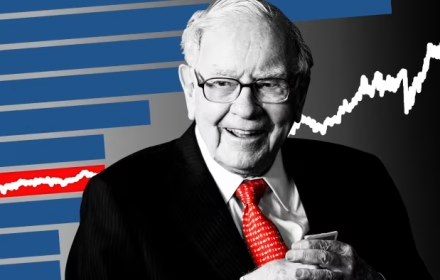While most participants in financial platforms trade in hours and days, for a scalper, everything is different — time is measured in minutes, and sometimes even seconds. Their goal is to take a little but many times.
Scalping is a type of intraday trading where positions are opened for a short period to capture profits from minimal price fluctuations. Unlike the classic approach, here the focus is not on the trend direction but on the ability to catch micro-movements.

Scalping in trading is not a “buy and hold” strategy but a constant process of accelerated analysis. The main idea is to make dozens, and sometimes hundreds, of trades per session, earning on short-term impulses. Such operations require high concentration, precise entry, and quick reaction.
Let’s explore what scalping is, what it is based on, what tools are used, and how justified the risk is.
How Scalping Works in Trading Practice
In practice, it all looks like a sequence of operations: assessing the situation, instantly opening a position, monitoring price movements, and quickly closing with a profit or minimal loss fixation. The time spent in a position rarely exceeds 5–10 minutes.
It is important to consider that the basis of successful execution is liquid instruments with good volatility. Scalpers prefer assets where there are no execution delays, and price levels are easily readable from the order book and other auxiliary data.
Tools and Programs for Scalping
Without reliable software, there is no place here. Specialized programs for scalping are used, providing access to instant quotes, market depth, and customizable indicators. These solutions allow setting up automatic orders, hotkeys, and a simplified interface. What is usually included in the basic set:
- platform with access to the order book and order tape;
- real-time connection with minimal delay;
- tools for cluster analysis and density tracking;
- hotkeys for instant entry and exit.
The less the delay, the higher the chance to enter at the right moment.
The Role of Technical and Fundamental Analysis in Fast Trading
Although it may seem that there is no room for global analytics in this format, technical analysis still plays an important role. It helps to identify support and resistance zones, moods within the trading session, and the strength of the movement. The main focus is on charts of lower timeframes: M1, M5, rarely — M15.
As for fundamental analysis, it is used more as a filter — to exclude periods of news releases that can sharply change the asset’s dynamics. For example, if a scalper is in a position at the moment of inflation statistics release, their strategy may fail.
Trading Terminals, Order Book, and Trade Tape
The key source of information is trading terminals, which allow quick assessment of the situation and response to changes. Advanced platforms provide access to the order book, reflecting real orders of participants, and the trade tape, showing who and at what price actually bought or sold the asset.
This level of detail helps scalpers determine the intentions of major participants, find levels with high volume, and track aggressive actions.
Examples of Strategies: How Entry Points Are Chosen
There are many scalping methods in trading, but they all are based on reaction speed and refined discipline. The most commonly used are:
- bounce from levels — opening a position when a reversal is confirmed;
- breakout — entering when the price exits a consolidation boundary;
- on densities — targeting large orders in the order book;
- momentum — using momentum in one direction without resistance.
Scalping strategies can be combined, but the key element is instant decision-making without unnecessary deliberation.
Indicators and Cluster Analysis
Many apply indicators for scalping, such as VWAP, short-term moving averages, RSI, or MACD on lower timeframes. However, the effectiveness of fast trading heavily depends on the ability to read the market.
This is where clusters come in — visualization of volumes by price and time. They allow seeing where liquidity accumulates and how volumes are distributed at the moment. This approach is popular among traders dealing with futures and currency pairs.
Risk Management and Loss Control in Intraday Trading
Without risk control, trading strategies are doomed. Using risk management is not a recommendation but a necessity. In scalping, the main focus is not on the number of profitable trades but on minimizing losses. Frequent entries increase the likelihood of errors, so each entry is accompanied by a clear stop-loss.
A scalper determines in advance: what volume is acceptable, where to close a deal in an unfavorable scenario, and when to end the session in case of deviation from the plan. This approach protects the deposit from emotional decisions and a series of unsuccessful entries.
Profitability of Scalping in Trading and Who Fits the Style
It’s hard to talk about numbers — everything depends on skills, platform, and discipline. But profitability can be higher than with classical strategies if implemented correctly because scalping is an active model where quality, not quantity of entries, matters. It suits those who:
- can make quick decisions and control emotions;
- are willing to sit at the terminal for several hours in a row;
- do not expect easy money but build a system.
Intraday trading is not universal. It requires constant attention, technical preparation, and the ability to work in a high-speed environment.

Conclusions
Scalping in trading is a style where there is no room for randomness. It can be effective but requires strict discipline and full engagement. Using technical analysis, working with the order book, proper risk management, and reliable trading terminals are key components of success.
The format of fast trading suits those who value dynamics, strive for quick results, and are ready to make decisions in seconds. However, as in any niche, without preparation and experience, expecting a stable result is not advisable.
 en
en  ru
ru  de
de  ar
ar  es
es  hi
hi  fr
fr  nl
nl  it
it  pt
pt  el
el 










